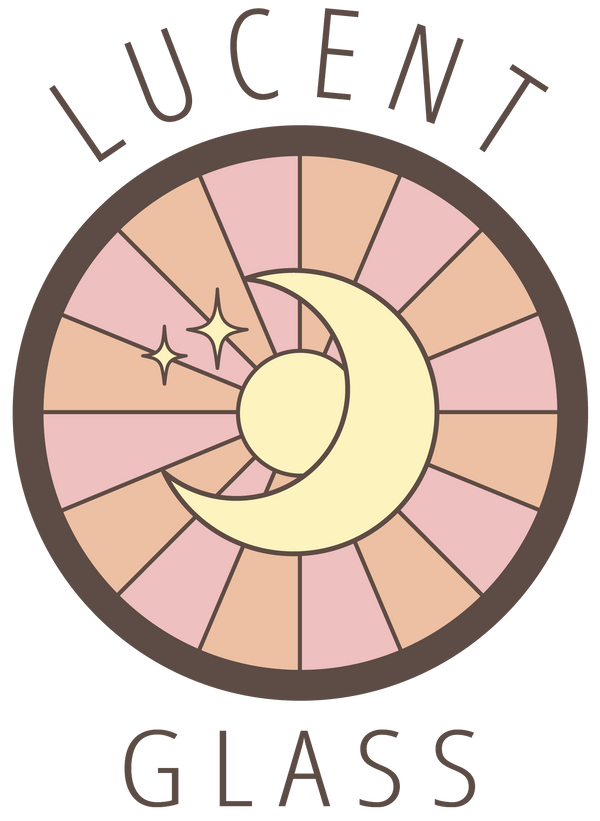Hey party people!
If you are wanting to start selling your work or if you have been asked to complete a commissioned piece you may be thinking "how should I price my stained glass art?" This blog will provide some insight on things to consider when determining price for stained art pieces and some tips on how to make your art business more profitable. Pricing is a concept that is always changing with material and environmental factors but here are some general guidelines that can help you determine your price.
1. What is your goal with your art business?
Hobby VS. business - If creating glass art is something you do for enjoyment then I want you to know that it is okay to leave it at that! There is a big difference between having a hobby for enjoyment and turning it into an income generating business. If you produce stained glass for enjoyment you can base your pricing on what you feel is fair for your materials cost and time if you choose.
2. Common ways Artists determine the price for their work
It is possible that one way of pricing resonates with you more than another. Here are some common ways that artists price their work.
A. Pricing by the square foot
Pricing by the square foot the most common way that artists will determine the cost of their work. All materials and time are included in your cost per square foot. It is important that you can estimate how long the window will take you. If your windows are less detailed than the cost per square foot goes down and if your windows are more detailed than the cost per square foot goes up. The size of the window will also raise or lower the cost per square foot. This style of pricing is most commonly used for glass artists.
How to determine cost using the sq foot
L x W ÷ 144 = sq. ft.
sq. ft x cost = price of the piece
B. Ask the client to pay for the supplies independently of your time
You can set an agreement with your client on having them pay for the supplies and your time or flat rate separately.
C. Time plus supplies
Take time stamps and a list of the supplies you have used to determine your actual cost. This is most common when creating smaller pieces such as sun catchers.
3. Other things to consider when pricing
A. The number of pieces in your project
Having a lot of pieces in your projects will make it more time consuming. If your client wants to decrease the price you can determine if there are some pattern lines that could be removed to simplify the drawing while still achieving the desired design and structure. Making a project smaller does not necessarily decrease the amount of time spent.
B. Design: straight cuts vs. a lot of curved cuts
Determine how much materials will be used before beginning your project by looking at the shapes you need to cut out of the glass. Curves take up way more glass than straight cuts and produce more waste. If your pattern calls for a lot of curves this will raise the materials cost. The potential for breakage is higher with curves as well.
C. Large glass pieces in your window
We prefer to keep glass pieces under 12" if possible to maximize the sheet glass since glass is most commonly sold in increments of 12". Having long pieces in your stained glass may be costly to replace if they break while you are constructing your window.
4. Turn your stained glass art patterns into a product
Consider having a stock pile of patterns that your client can choose from. Pattern design is very time consuming and sometimes creativity just isn't sparking! it can take a while to design a pattern for stained glass. Having a stock pile of patterns eliminates the guesswork of what your client is wanting and less taxing on your creative soul. You can adjust the colours and pull design elements out of past projects to help the client actualize their vision.
We hope that these tips helped you gain some insight on pricing your stained glass work. Thank you for reading and please feel free to reach out if you have any questions. We are so happy to see you being successful in your art and wish you all the best!
With love,
Lucent Glass team


4 comments
This is very helpful, thank you! I’m not keen on selling my work, and I appreciate your comment regarding just enjoying the hobby. I am very lucky to be able to make stained glass without having to think about selling; however, sometimes I get asked if something I make is for sale, or a friend or family member asks for a piece and insists on paying for it. This will help me a lot in that regard.
Hi Carol!
Thank you for your response to our blog post. To answer your question, yes we would include waste into the cost to account for the material required to complete the project. When your pattern has a lot of curves pieces you can underestimate and you don’t realize how much glass it will actually take to build the design! This is why a lot of curved cuts will raise the cost of the window.
Thank you,
Jessica Simmons
Owner of Lucent Glass and Art
Do you account for the waste material in your pricing? Or just the amount of glass used in the final product?
Thanks!!
Thank you for the breakdown. I’m debating going from hobby to income. Still have more to practice with the glass and projects, but I appreciate the information to think about it.